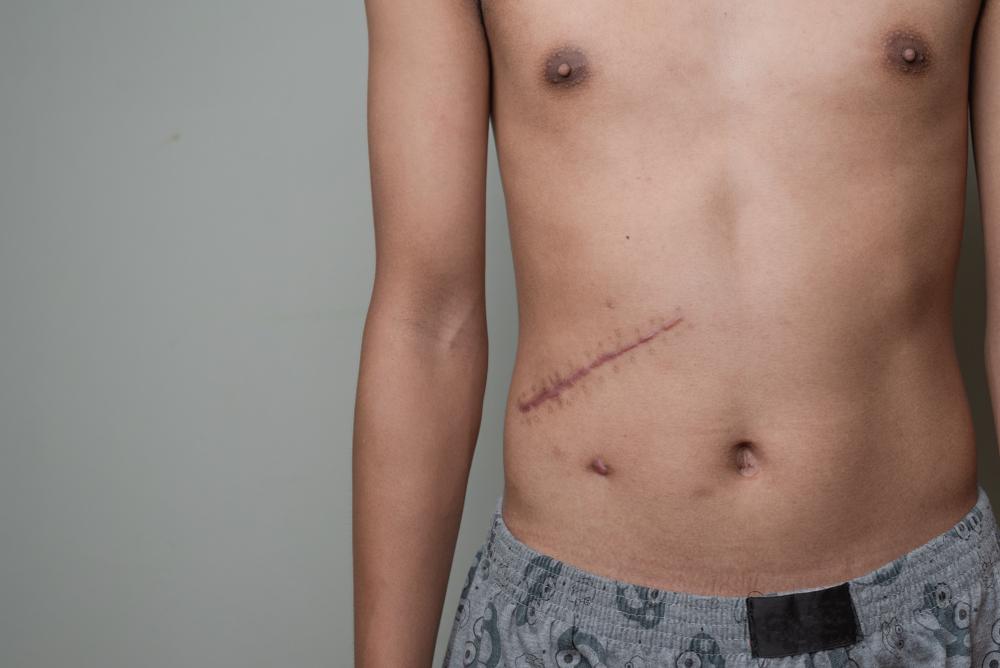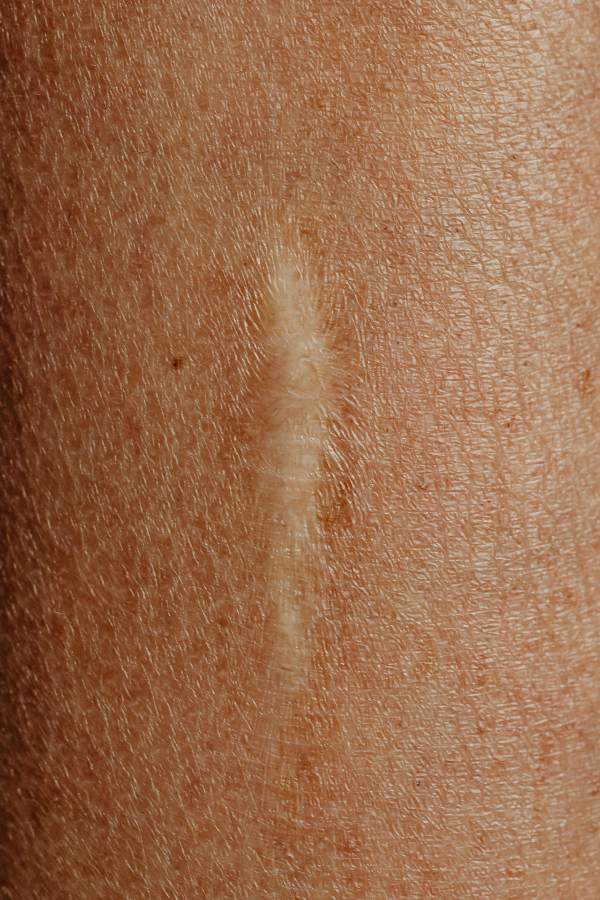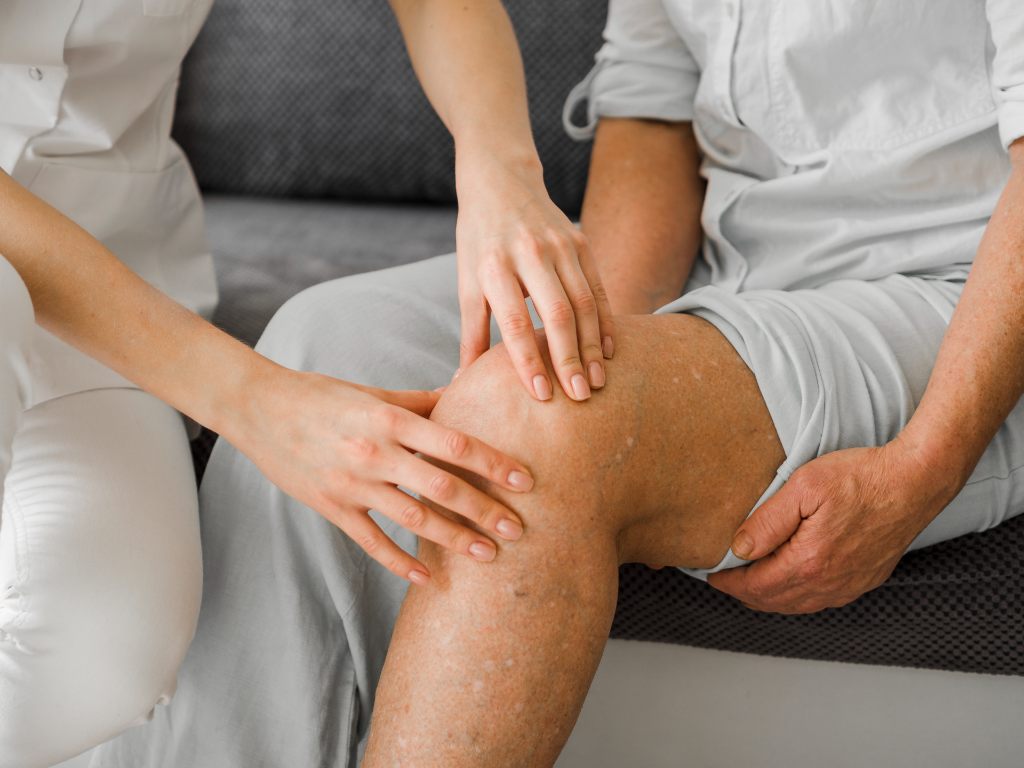It’s estimated that almost 100 million people worldwide develop scars every year, which can cause significant physical and emotional discomfort. A variety of treatment options exist, but not all are effective for each case, leading patients to seek alternative solutions to manage their scar tissue. Recent research suggests that shockwave therapy might be an effective method for managing scar tissue without the expensive costs or side effects associated with surgery and prescription medication.
In this blog post, we’ll explore:
- Causes of Scar Tissue
- Benefits of Shockwave Therapy for Scar Tissue
- How Shockwave Therapy Works
- What is a Shockwave?
- How do Shockwaves Treat Scar Tissue?
- Types of Shockwave Therapy
- Who is a Good Candidate for Shockwave Therapy?
- The Shockwave Therapy Procedure
- Shockwave Therapy Side Effects
- The Best Shockwave Therapy for Scar Tissue
Causes of Scar Tissue

Scar tissue can develop from various causes, from chronic conditions to injuries or surgeries. Here are some common reasons for scar tissue formation:
- Joint Injuries: Traumatic injuries to a joint can lead to scar tissue formation, restricting mobility during the healing process.
- Surgery: Joint surgeries can cause excessive scar tissue, affecting joint mobility despite being necessary to repair damaged structures.
- Inflammatory Conditions: Chronic inflammation in the joints, like rheumatoid arthritis, can lead to scar tissue deposition, reducing flexibility and mobility.
- Repetitive Stress: Overuse or repetitive stress on a joint can cause inflammation and scar tissue accumulation, restricting movement.
- Infections: Joint infections can trigger an inflammatory response, leading to the formation of scar tissue, potentially limiting mobility.
- Age-related Changes: With age, decreased tissue regeneration and cartilage wear can prompt the body to produce more scar tissue, causing joint stiffness and reduced mobility.
It’s important to note that these are just some of the most common causes of scar tissue. If you are experiencing joint pain, you can learn if your condition is suitable for treatment and try shockwave therapy with our New Patient Special.
Considering Shockwave Therapy?
Try SoftWave Therapy for just $69. Non-invasive healing that reaches deeper.

Benefits of Shockwave Therapy for Scar Tissue
Shockwave therapy is a promising non-invasive option for managing scar tissue. It uses high-energy shock waves to stimulate healing in the affected area. Here are some advantages of using shockwave therapy for scar tissue management:
Facilitates Scar Tissue Breakdown
Shockwave therapy can stimulate the breakdown of fibrous scar tissue, leading to a more flexible joint. It also promotes the remodeling of collagen, which can improve the healing of scars.
Improved Mobility
Scar tissue can restrict mobility in certain cases, such as joint scarring. By reducing the density of the scar tissue, shockwave therapy can improve mobility.
Reduced Discomfort
Scar tissue buildup may cause discomfort or pain. Shockwave therapy can help reduce this discomfort by breaking down the scar tissue and reducing inflammation.
Non-Invasive and Safe
Shockwave therapy is non-invasive and safe, making it a good option for those who want to avoid surgical scar treatments. It does not require incisions or anesthesia, and it has a low risk of complications.
Overall, shockwave therapy is a promising treatment option for those suffering from scar tissue.
How Shockwave Therapy Works
Shockwave therapy is a non-invasive treatment option that leverages high-energy acoustic waves to stimulate the body’s natural healing process, making it particularly effective in treating scar tissue. Here’s how it works:
What is a Shockwave?
Shockwaves are quick acoustic pulses that comprise a high-pressure surge, followed by a comparatively lower-pressure trough. They can be produced by various sources, such as supersonic aircraft, explosions, lightning, earthquakes, or any other event that causes a sudden change in air pressure.
How do Shockwaves Treat Scar Tissue?
A device is used to generate and safely deliver shockwaves to the affected area. These shockwaves can break down scar tissue at the cellular level, improve blood supply, and initiate the body’s natural healing process.
Types of Shockwave Therapy
Several types of shockwave therapy are available, including radial shockwave therapy (RSWT), focused shockwave therapy (FSWT), and acoustic wave therapy (AWT).
Radial Shockwave Therapy utilizes a handheld device that applies pressure waves to the skin’s surface. This form of therapy is often used to treat conditions like plantar fasciitis and achilles tendinopathy but can also effectively address joint scar tissue.
Focused Shockwave Therapy delivers high-intensity shockwaves directly to the affected area, making it useful for treating deeper, chronic conditions like non-healing fractures and dense scar tissue.
Acoustic Wave Therapy uses a device to deliver low-intensity shockwaves to the affected area, making it suitable for treating sensitive areas with scar tissue while promoting healing and reducing inflammation.
broad-focused Shockwave Therapy releases high-intensity shockwaves that penetrate a wider and deeper area of tissue (7cm x 12cm) compared to focused shockwaves (1cm x 12cm) or radial waves (2cm x 2cm). This is especially beneficial when dealing with large areas of scar tissue. SoftWave for scar tissue is the only broad-focused shockwave treatment widely available in the US. It can treat the same conditions as traditional focused shockwave therapy while providing superior relief for large joints and muscle issues such as hip, knee, or ankle pain. broad-focused shockwaves may also require fewer sessions compared to radial or focused shockwave treatments.
Who is a Good Candidate for Shockwave Therapy?

Some factors that make a patient a good candidate for shockwave therapy include:
- Patients with significant scar tissue
- Patients with limited success with other therapies
- Patients who prefer non-invasive treatment options
Patients dealing with significant scar tissue may find shockwave therapy a viable treatment option. This includes those with conditions such as hypertrophic scars, contracture scars, or keloids. If traditional treatments such as creams, silicone sheets, and injections fail to provide significant relief, shockwave therapy might be a promising alternative.
Considering Shockwave Therapy?
Try SoftWave Therapy for just $69. Non-invasive healing that reaches deeper.

The Shockwave Therapy Procedure
It’s vital to understand what to expect during a shockwave therapy session:
- Preparation: Ultrasound gel is applied to the scar tissue area before the shockwave device is gently placed on the skin.
- During the Procedure: Patients will feel a tapping or pulsing sensation as the shockwaves are administered. Some might experience slight discomfort, but anesthesia is usually not necessary.
- Post-procedure: After a 10-15 minute session, patients can typically resume normal activities immediately. However, doctors might recommend avoiding strenuous activities for 24-48 hours.
Shockwave Therapy Side Effects
While shockwave therapy is generally safe, it does carry a minor risk of side effects, which may include:
- Mild pain or discomfort during or after the treatment
- Swelling or bruising
- Skin irritation or redness
- Temporary numbness or tingling
These side effects are typically mild and transient, and patients can usually return to their regular activities immediately following the procedure.
SoftWave, an FDA-cleared shockwave therapy, is a safe and effective option for treating scar tissue. Side effects from SoftWave are minimal and non-restrictive. It does not cause bruising or swelling, and any slight redness or soreness typically subsides within one to two days.
The Best Shockwave Therapy for Scar Tissue
Are you looking for safe, reliable, and effective relief from scar tissue?
SoftWave therapy is FDA-cleared, patented, and nationally recognized for its leading tissue regeneration technology. Unlike other types of high-energy shockwave treatments, SoftWave is the only shockwave therapy on the market that uses true broad-focused shock waves that treat larger and deeper areas of tissue.
Thousands of patients have experienced the benefits of SoftWave for scar tissue, including:
- Little to no side effects
- Short treatment time
- Quick recovery
- Long-lasting results
Find a SoftWave Therapy provider near you or learn more about SoftWave and whether or not you’re eligible for full treatment today!
New Patient Special
Try SoftWave for just $69 at a clinic near you and learn if you’re a candidate for full treatment




